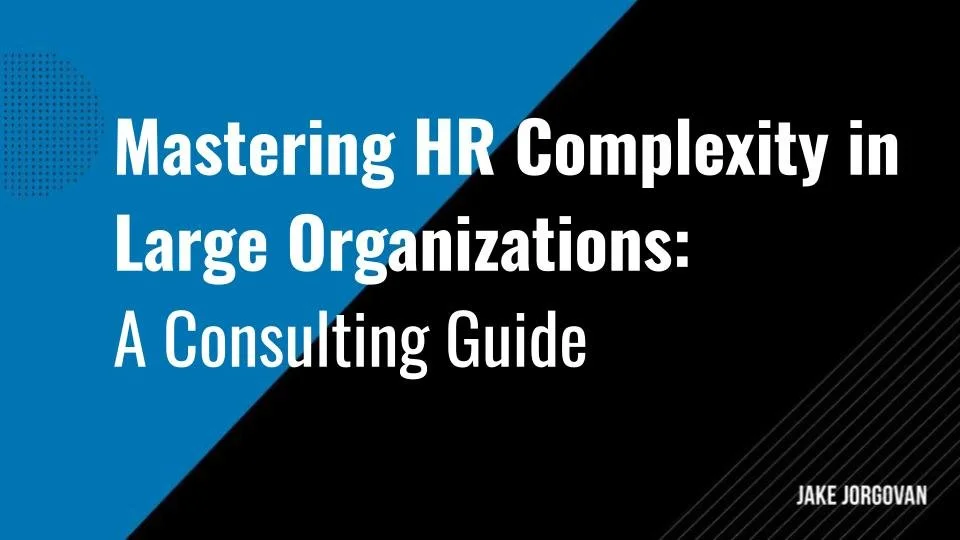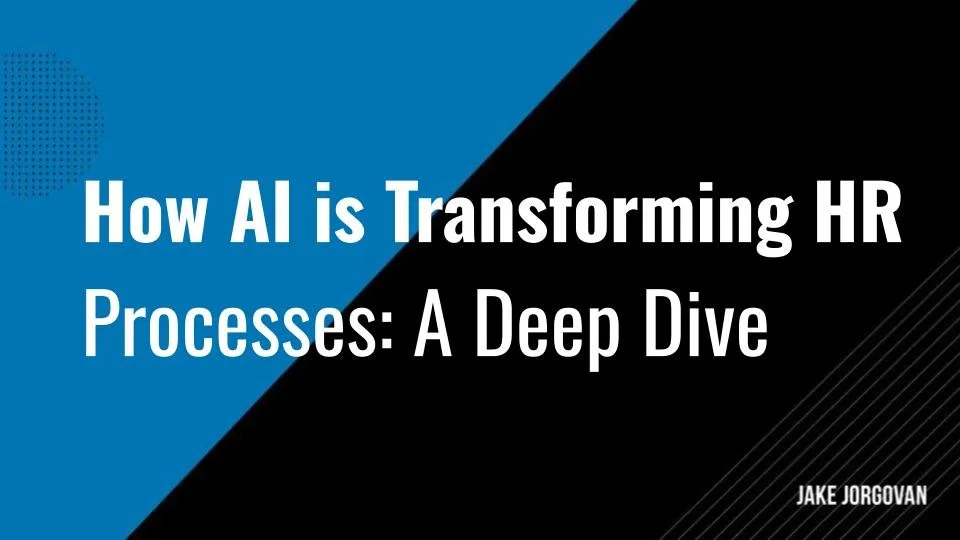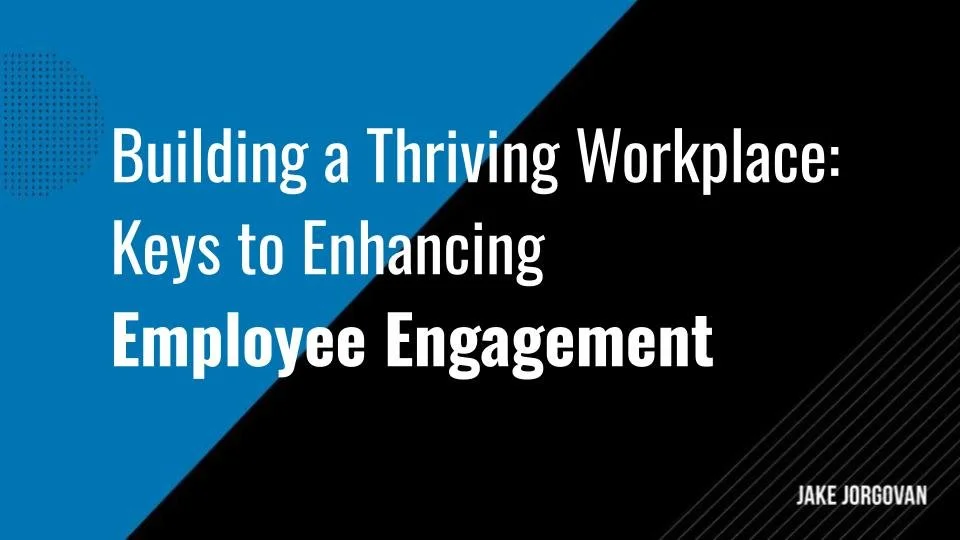How AI is Transforming HR Processes: A Deep Dive
Like it or not, AI is here to stay – and it’s changing the world as we know it.
HR is one area where AI is becoming increasingly used.
But you’re on the right page to learn how to harness it.
We’ll discuss:
7 ways how AI is transforming HR processes and how you can leverage those transformations
3 challenges of using AI in HR and how to overcome them
Practical ways to prepare for the future of AI in HR
Let’s dive in.
7 Ways AI is Transforming HR
This section discusses seven ways AI can enhance your recruiting process. We’ll show you the benefits, practical applications, and real-life examples for all the tools below.
1. Streamlining the recruitment process through AI-powered applicant tracking systems.
AI-powered applicant tracking systems (ATS) involve leveraging artificial intelligence to automate and optimize various candidate sourcing, screening, and selection aspects.
This approach enables you to:
Manage a large volume of applications efficiently.
Identify the most suitable candidates quickly.
Reduce the administrative burden associated with recruitment.
How it works:
An AI-powered ATS can automatically parse resumes and applications to extract relevant information, such as skills, experience, and education, using natural language processing (NLP). It then matches this data against the job requirements to rank candidates based on suitability. This speeds up the initial screening process and ensures a more objective evaluation of candidates, minimizing biases that can occur in manual reviews.
Real-life example:
Swag by Employment Hero is an AI "superapp" aimed at helping SMEs overcome talent acquisition challenges by automating recruitment tasks like drafting job descriptions, predicting hiring needs, matching candidates to jobs, and posting vacancies. It offers a free job board, Swag Jobs, and integrates benefits like InstaPay and cashback deals to enhance employee offerings, making SMEs more competitive employers.
Why you need it: This level of automation and intelligence allows you to focus on engaging with the most promising candidates, thus improving your recruitment process’s efficiency. Additionally, by reducing time-to-hire and enhancing candidate matching, AI-powered ATS can contribute to better hiring outcomes and a stronger overall talent acquisition strategy.
2. Enhancing employee experience with personalized AI-driven onboarding programs.
Enhancing employee experience with personalized AI-driven onboarding programs means leveraging artificial intelligence to tailor the onboarding process to individual new hires, making it more engaging, informative, and effective. This customized approach can significantly improve a new employee's integration into your company by addressing their unique needs, learning styles, and professional backgrounds.
How it works:
AI-driven onboarding utilizes data analytics and machine learning algorithms to customize the onboarding experience. Based on the new hire's role, previous experience, skill set, and even learning pace, the AI system can recommend specific training modules, set personalized goals, and provide relevant resources for their immediate success. Therefore, each new employee receives an informative onboarding experience that alignes with their personal development needs and career aspirations.
Real-life example:
Suppose you're onboarding a new software developer with a background in a specific programming language, but your projects primarily use another. In that case, the AI system might prioritize learning modules for the relevant language and technologies they'll be using. It might also connect them with mentors or teams working on similar technologies to foster collaboration and knowledge sharing from day one.
Why you need it: AI-driven onboarding can continuously gather feedback from the new hire throughout the process, allowing for real-time adjustments to the program. This adaptive learning approach ensures that the onboarding process remains engaging and effective, reducing the time it takes for new employees to become productive members of your team.
3. Implementing AI-based predictive analytics for talent retention and turnover reduction.
Implementing AI-based predictive analytics for talent retention and turnover reduction involves using artificial intelligence to analyze various data points related to employee behavior, performance, engagement, and satisfaction to identify patterns and predict which employees are at risk of leaving.
Besides, AI-based analytics can also help understand broader organizational trends that may contribute to turnover, such as management style, work-life balance, or company culture. By addressing these systemic issues, you can create a more supportive and engaging work environment that retains current talent and attracts new employees.
How it works:
AI-based predictive analytics models use machine learning to sift through large volumes of employee data, including work history, performance appraisals, engagement survey responses, and even social media interactions. Thus, they identify trends and indicators to predict an employee's departure.
Implementing AI for talent retention involves integrating predictive analytics tools with your existing HR systems to monitor and analyze employee data continuously.
Real-life example:
A sudden drop in productivity, decreased engagement in team activities, or a pattern of taking personal time off could signal an employee's disengagement.
By identifying these signs early, you can take targeted actions to address the underlying issues.
For instance, if the AI system flags a high-performing employee as at risk of leaving due to a lack of career advancement opportunities, you can proactively engage in a career development discussion, offer additional training or mentorship, or explore internal mobility options to re-engage them.
Why you need it: This proactive approach enables you to address potential issues before they lead to turnover, enhancing retention rates. You can also make data-driven decisions to enhance employee retention strategies and reduce turnover rates effectively.
4. Utilizing AI for real-time employee feedback and engagement analysis.
Using AI for real-time employee feedback and engagement analysis means employing artificial intelligence technologies to continuously collect, analyze, and interpret employee feedback across various channels to gauge engagement levels, sentiment, and overall workplace satisfaction.
How it works:
AI tools can aggregate data from a wide range of sources, including employee surveys, pulse checks, social media, internal communication platforms, and even email, to provide a comprehensive view of employee sentiment. Natural language processing (NLP) and sentiment analysis are then used to interpret the qualitative data, identifying key themes, concerns, and areas of satisfaction or dissatisfaction among employees.
Leveraging AI for engagement analysis entails integrating AI tools with your existing HR and communication platforms, setting up dashboards for real-time insights, and establishing protocols for responding to AI-generated insights.
Real-life example:
For instance, if there's a recurring theme of dissatisfaction related to work-life balance in the feedback collected from different departments, the AI system can alert HR and management to this issue in real time. This immediate insight allows for swift action, such as reassessing workload distributions, implementing flexible working arrangements, or offering wellness programs to address the concern before it leads to wider disengagement or turnover.
Moreover, AI-driven analysis can personalize engagement efforts by identifying what motivates and matters to individual employees or specific teams, enabling more targeted and effective interventions. For example, if a particular team responds positively to professional development opportunities, HR can focus on providing more of these opportunities to enhance engagement within that group.
Why you need it: This approach allows for a more dynamic, responsive HR strategy that addresses issues and capitalizes on opportunities as they arise rather than relying on periodic surveys or assessments.
5. Automating routine HR tasks and inquiries through chatbots and virtual assistants.
Automating routine HR tasks and inquiries through chatbots and virtual assistants involves leveraging AI-driven technologies to handle repetitive and time-consuming HR-related questions and processes.
Additionally, AI systems can learn from interactions to improve their responses over time. They can even identify trends in employee concerns or questions, offering valuable insights for HR strategy and policy development.
How it works:
Chatbots and virtual assistants use natural language processing (NLP) to understand and respond to employee inquiries on a range of topics, from company policies and benefits information to leave requests and expense submission guidelines. These AI systems can be integrated into company intranets, HR portals, or even messaging platforms, providing employees with 24/7 access to HR support.
Implementing chatbots and virtual assistants in HR requires selecting the right platform, integrating it with existing HR systems and databases, and training the AI on your organization's specific policies and procedures. This setup ensures that the AI can provide accurate, relevant information to employees, streamlining HR operations and improving overall service delivery.
Real-life example:
Telstra's AI software, Darcy, is a virtual HR assistant designed to streamline employee queries and tasks across various company systems. Leveraging IBM Watson's natural language understanding, Darcy can interpret and guide employees through complex questions, providing direct answers or relevant information from a knowledge base. If unable to resolve a query, Darcy escalates it to a human HR agent. Telstra plans to expand Darcy's capabilities across more platforms, enhancing its ability to perform cross-platform tasks and reminders, aiming for a more integrated and efficient employee experience.
Why you need it: This automation allows HR staff to focus on more strategic and complex tasks by offloading simple queries and operational duties to intelligent systems capable of interacting with employees in a natural, conversational manner.
6. Supporting employee development with AI-powered personalized learning and development platforms.
Supporting employee development with AI-powered personalized learning and development platforms entails leveraging artificial intelligence to tailor professional growth opportunities to individual employee needs, preferences, and career trajectories.
Moreover, AI-powered platforms can facilitate social learning and collaboration by connecting employees with similar learning interests or career goals, fostering a community of continuous learning within the organization. This can enhance knowledge sharing and innovation, further supporting organizational growth and adaptability.
How it works:
AI-driven learning platforms can analyze an employee's skill set, performance data, career aspirations, and learning preferences to recommend customized learning paths and resources. This might include a mix of online courses, microlearning modules, virtual workshops, and peer learning opportunities that align with the employee's specific development goals and learning style.
Implementing AI-powered personalized learning and development requires integrating the platform with existing HR and performance management systems to ensure a seamless data flow. It also involves curating a diverse and comprehensive content library and establishing feedback mechanisms to continuously improve the learning experience.
Real-life example:
NAB utilizes 'people analytics' to enhance the performance of its 40,000 employees by harnessing data to identify and replicate the success of top performers and teams. This approach helps in improving customer satisfaction and increasing profitability, evidenced by a correlation between employee engagement and customer satisfaction in branches.
NAB also applies analytics to optimize the onboarding process for new hires, aiming to shorten the time to peak performance and extend employees' tenure, which is valuable for both customer relationships and the company's bottom line. Additionally, in call center environments, analytics have been used to address high attrition rates by identifying and mitigating workload issues, demonstrating the tangible benefits of informed HR strategies.
Why you need it: This approach moves beyond one-size-fits-all training programs, offering a more engaging and effective way for employees to acquire new skills and knowledge relevant to their roles and future career paths.
7. Improving workforce planning and strategic HR through AI-driven scenario modeling and forecasting.
Improving workforce planning and strategic HR through AI-driven scenario modeling and forecasting involves using artificial intelligence to analyze vast amounts of data and predict future workforce needs and trends.
How it works:
AI-driven scenario modeling allows you to simulate various business scenarios and their potential impact on workforce requirements. For example, if you're considering expanding into a new market or launching a new product line, AI can help predict the types and numbers of roles you'll need, the skills required, and the timeline for scaling your workforce.
Forecasting, on the other hand, involves using AI algorithms to analyze current workforce data, industry trends, and economic indicators to predict future changes in the workforce. This could include turnover rates, the emergence of new skill requirements, or shifts in employee engagement levels.
Real-life example:
For instance, if AI forecasting indicates a future skill gap in a critical area like data science, you can preemptively launch training programs for existing employees or adjust your recruitment strategy to attract talent with the necessary skills. Similarly, if the data suggests an upcoming spike in turnover, you can investigate and address the underlying causes, such as employee satisfaction or competitive compensation, well before it impacts your operations.
Why you need it: This forward-looking approach enables HR professionals to make informed decisions about hiring, training, and organizational development. The predictive capability enables proactive planning, reducing the risk of talent shortages or surpluses. Besides, forecasting allows you to develop strategies to mitigate risks, such as implementing retention programs, upskilling initiatives, or strategic recruitment drives.
AI in HR: 3 Challenges to Consider
Implementing AI in HR comes with a set of challenges that need careful consideration and strategic management.
1. Ingrained Biases
One significant concern is the risk of unintended bias in AI algorithms. Since these systems learn from historical data, they can inadvertently perpetuate past biases. This was evident in a notable incident where an automated recruitment tool Amazon used favored male candidates over females due to the male-dominated data it was trained on.
This incident highlights that the ultimate decision-making remains a human responsibility.
2. Business Intelligence Misalignment
Another challenge is the AI's current inability to match the depth of business intelligence available in other fields, such as marketing or finance. HR departments work with limited data points on employees, making it difficult for AI systems to generate the rich insights in other domains where data is more abundant and varied.
3. Data Quality Assurance
The success of AI in HR is heavily contingent on the quality, reliability, and integrity of the underlying data. Many organizations may find it challenging to provide high-quality data if robust data collection and management practices are not established.
Plus, ensuring data privacy and building trust among employees is paramount. Without the right ethical and legal frameworks to safeguard employee data and rights, there's a risk that employees may be reluctant to engage with AI-driven HR tools, undermining their effectiveness and potential benefits.
Addressing these challenges requires a thoughtful approach to AI implementation, emphasizing ethical standards, data quality, and human oversight.
How to Prepare for the Future of AI in HR
To adapt to the AI-driven future, HR managers should focus on enhancing their understanding of AI and its ethical implications, improving data literacy, and fostering close collaboration with IT and data science teams.
Emphasizing change management is crucial as AI transforms HR roles and processes. Initiating pilot projects can help understand AI's impact in a controlled setting.
It's also important to stay updated on legal aspects related to AI and prioritize building a culture that values data-driven decision-making.
Investing in employee skill development, particularly in areas not easily replaced by AI, and maintaining employee transparency about AI use are key strategies for successful AI integration in HR.
By focusing on these areas, you can prepare for integrating AI into HR practices and position yourself as a strategic leader in leveraging AI to enhance organizational effectiveness and employee experience.


























